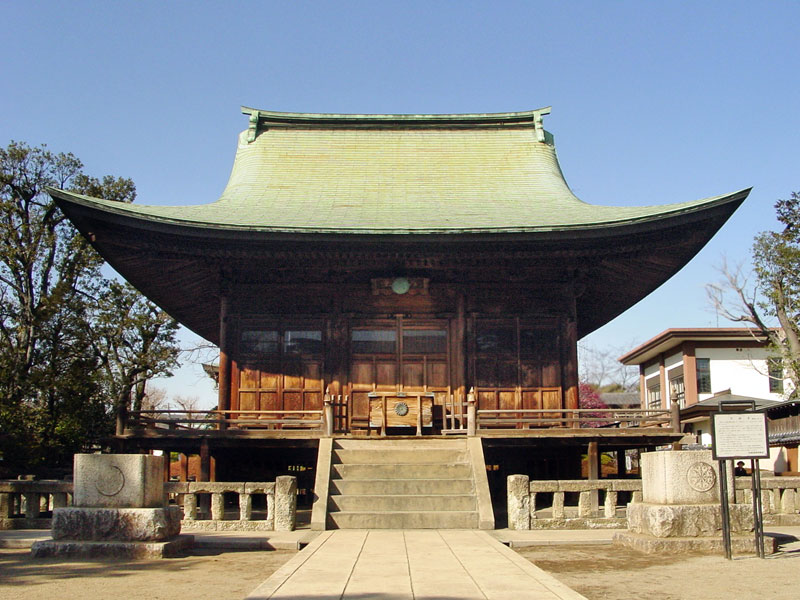|
||
 |
||

En'yuuji Shakadou 円融寺釈迦堂 (Tokyo)
(C)2001 Japanese Architecture and Art Net Users System. No reproduction or republication without written permission.
掲載のテキスト・写真・イラストなど、全てのコンテンツの無断複製・転載を禁じます。
|
||||||
| shakadou 釈迦堂 | ||||||
| KEY WORD : architecture / buildings & structures | ||||||
| A hall in which a statue of the historical Buddha *Shaka 釈迦, born in either the mid-6c or mid-5c. B.C in Kapilavastu, central India, is enshrined. Among the eight well-known shakadou, the largest is 7×7 bays (22.39m × 23.72m), and is found at Enryakuji 延暦寺( 1347; transferred to Enrakuji ca 1595) in Shiga prefecture. The smallest is 3×3 bays (5.74m ) and is found at Shinchoukokuji 新長谷寺 (Muromachi period) in Gifu prefecture. This building is in a simple wayou style *wayou 和様, with single eaves *hitonoki 一軒, boat-shaped brackets *funahijiki 舟肘木 placed directly on the pillars. The hipped roof is covered with cypress bark *hiwadabuki 桧皮葺. The oldest is found at Daihouonji Senbon Shakadou 大報恩寺千本釈迦堂 (1227) in Kyoto, 5×5 bays (19.53m ×23.19m). The Zen style *zenshuuyou 禅宗様, is immediately evident in three shakadou with closely packed bracket complexes atop pillars and in the interstices, and the use of rainbow beams and bottle struts *kouryou taiheizuka 虹梁大瓶束, in the gable pediments. These are: Zenpukuin Shakadou 善福院釈迦堂 (1337) in Wakayama prefecture, 5×5 bays (11.69 m). It has an enclosed pent roof skirting *mokoshi 裳階, En'yuuji Shakadou 円融寺釈迦堂 (Muromachi period / remodeled during Edo period) in Tokyo, 3×4 bays (6.30m ×8.07m); and Ankokuji Shakadou 安国寺釈迦堂 (1339) in Hiroshima prefecture, 3×3 bays (8.51m ). It has very widely spaced rafters oomabara daruki 大疎垂木, with tail rafters *odaruki 尾垂木, that bear a considerable amount of the weight of the roof structure. | ||||||
| |
||||||

En'yuuji Shakadou 円融寺釈迦堂 (Tokyo) |
||||||
| REFERENCES: | ||||||
| EXTERNAL LINKS: | ||||||
| NOTES: | ||||||
(C)2001 Japanese Architecture and Art Net Users System. No reproduction or republication without written permission. 掲載のテキスト・写真・イラストなど、全てのコンテンツの無断複製・転載を禁じます。 |
||||||